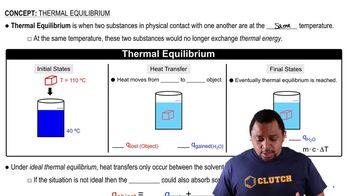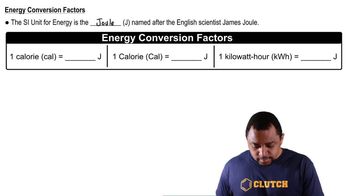(b) An experiment requires 15.0 g of cyclohexane, whose density at 25 C is 0.7781 g>mL. What volume of cyclohexane should be used?
Use of the British thermal unit (Btu) is common in some types of engineering work. A Btu is the amount of heat required to raise the temperature of 1 lb of water by 1°F. Calculate the number of joules in a Btu.
 Verified step by step guidance
Verified step by step guidance
Verified video answer for a similar problem:
Key Concepts
British Thermal Unit (Btu)

Joules

Unit Conversion

(c) A spherical ball of lead has a diameter of 5.0 cm. What is the mass of the sphere if lead has a density of 11.34 g>cm3? (The volume of a sphere is 14>32pr3, where r is the radius.)
A watt is a measure of power (the rate of energy change) equal to 1 J/s. (a) Calculate the number of joules in a kilowatt-hour.
A watt is a measure of power (the rate of energy change) equal to 1 J/s. (b) An adult person radiates heat to the surroundings at about the same rate as a 100-watt electric incandescent light bulb. What is the total amount of energy in kcal radiated to the surroundings by an adult over a 24 h period?
Indicate which of the following are exact numbers: (a) the mass of a 3- by 5-in. index card, (b) the number of ounces in a pound, (c) the volume of a cup of Seattle's Best coffee, (d) the number of inches in a mile, (e) the number of microseconds in a week, (f) the number of pages in this book.
